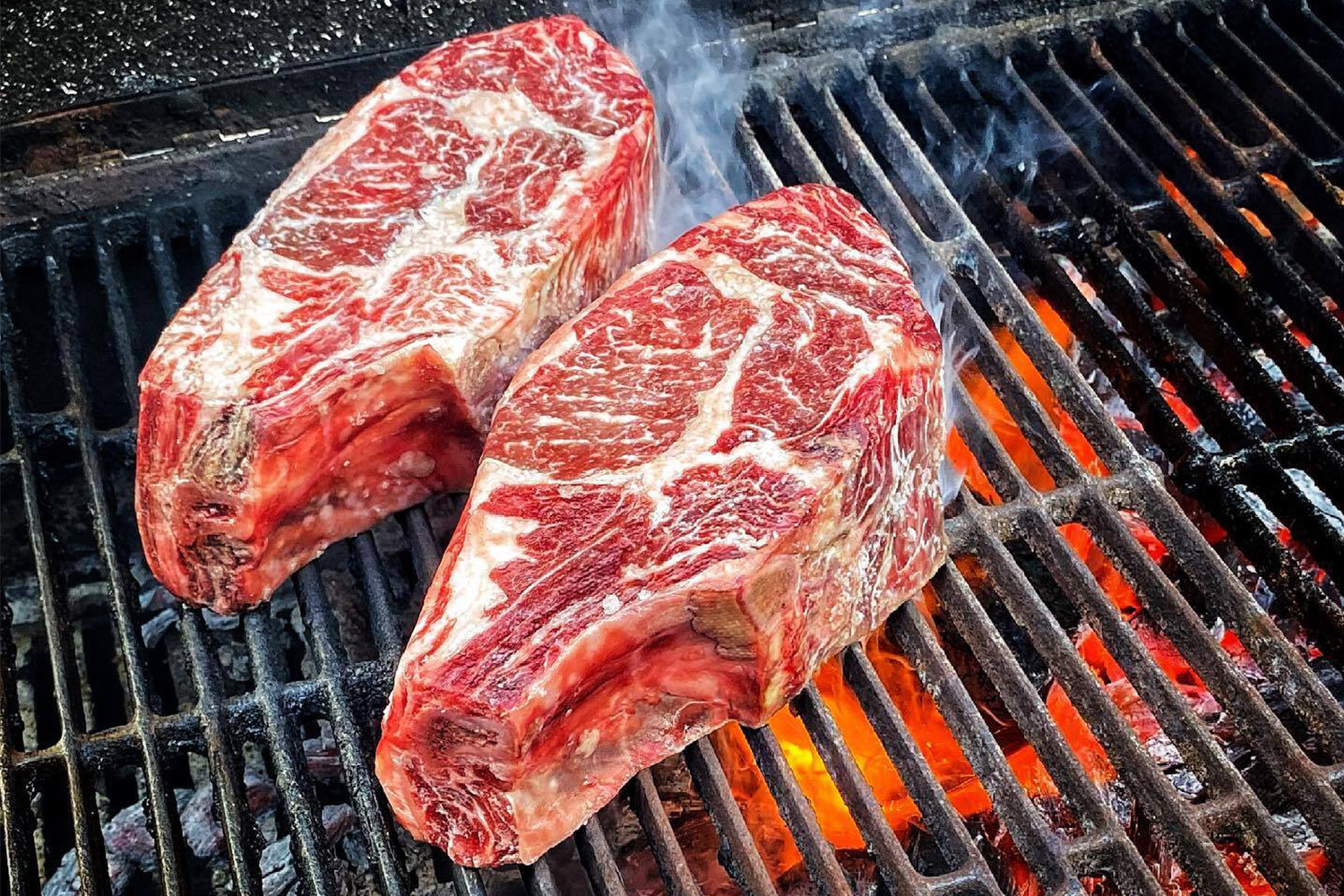Nota bene: All products in this article are independently selected and vetted by InsideHook editors. If you buy something, we may earn an affiliate commission.
Welcome to the InsideHook Guide to Summer, a collection of recommendations on everything worth doing, drinking, eating, watching and otherwise enjoying between now and Labor Day. Don’t forget the sunscreen.
When it comes to high-end steaks, most meat purveyors don’t have a certain variety of cow: Holsteins. That’s not the case at San Rafael-based Flannery Beef, where a father-daughter duo specializes in dry-aging beef from Holstein dairy cows to create premium USDA Prime steaks that are sold directly to consumers as well as Michelin-starred restaurants including Niku Steakhouse, the Village Pub and the French Laundry.
Flannery COO Katie Flannery is a third-generation butcher who started working in her family’s shop in her late teens and followed her father when he branched out to specialize in selling USDA Prime cuts of dry-aged Holstein beef.
“We’re only working with one breed and that’s the Holstein,” Flannery tells InsideHook. “For the longest time, this particular breed was looked down on by everybody in the beef industry because the majority of dairy produced in the United States is from female Holsteins. But the other side of that coin is, ‘Okay, what happens to the males?’”
“They used to be the source of the veal program in the U.S., but that has greatly declined in popularity. So what to do with male Holsteins?” she asks. “A couple of big players in the U.S. put a lot of time, money and research into it and figured out you have to give Holsteins more food for them to gain the same amount of weight and develop the same marbling as an Angus cow. Once they figured that out, the quality from Holsteins became phenomenal. It costs more money to raise the animals, but they’re generating a much higher percentage of USDA Prime beef.”
Pair This St. Louis Pork Steak Recipe With BBQ, Baseball and Beer
Thin-cut pork butt became popular in St. Louis in the early 1950sProcessors as opposed to producers, the Flannerys get the best of the best Prime cattle, in pieces that can weigh as much as 30 pounds, from local ranches and then break them down into New York strips, porterhouses and ribeyes after they’ve been aged for as few as 30 days and as many as 90.
“At most major meat companies, dry aging is a small part of what they do because it’s a difficult process that takes a lot of time and energy to manage. We’re the opposite,” Flannery says. “Almost everything we touch we want to dry age. The flavor profiles of dry-aged meat are incredibly different from purveyor to purveyor, like with wines and terroir. We’ve made a good name for ourselves because our flavor profile is unique. There’s a very healthy microbiome at our production facility, which means the mold loves to grow on our product here. It adds a tremendous amount of flavor that other purveyors don’t have in their walk-in coolers.”
In addition to the standard steaks that are available from Flannery, another offering from the prolific protein purveyor is their California reserve dry-aged Jorge ribsteak, a cut that’s named after company pal Jorge Ordoñez, a wine importer, and taken from the chuck end (AKA the rib cap) of the prime rib.
“The rib cap is literally God’s gift to man. It is the most flavorful, tender cut of the entire animal and it’s just amazing,” Flannery says. “We only cut Jorges from the chuck end of the rib and we make sure each one of these ribsteaks has a good section of rib cap muscle on it because that’s where all the flavor is. A lot of places won’t give you that option. It’s usually luck of the draw if you get a steak from the chuck end.”
Named after Ordoñez because he specifically requested this particular cut — and ordered 120 of them as his first purchase — the Jorge is about three inches thick and comes with a fully intact rib bone.
Suited for the grill or the reverse-sear method, the Jorge is named for an individual, but consuming one is not necessarily a one-person job.
“I would applaud you if you can finish the whole thing, but there are people out there that could,” Flannery says. “Having grown up in this family business, my greatest fear is running out of steak at the dinner table, so I always say two people could eat a Jorge. Realistically, you could easily feed three with one and probably even stretch it to four.”
We've put in the work researching, reviewing and rounding up all the shirts, jackets, shoes and accessories you'll need this season, whether it's for yourself or for gifting purposes. Sign up here for weekly style inspo direct to your inbox.
